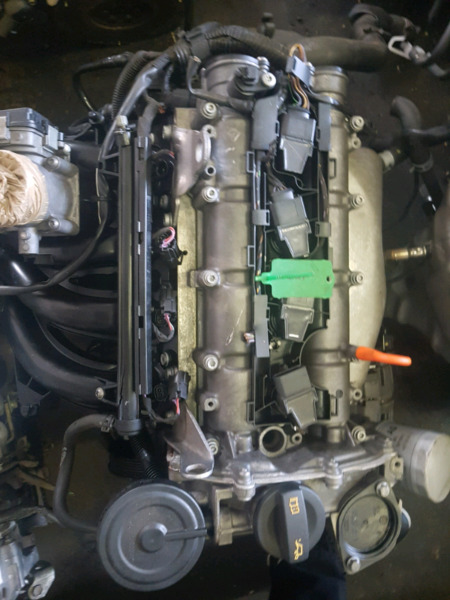Upgrade a state-of-the-art clp engine for better performance.
Upgrade a state-of-the-art clp engine for better performance.
Blog Article
Exactly How a Clp Engine Can Improve Efficiency in Numerous Industries
The introduction of CLP engines marks a substantial shift in operational effectiveness throughout numerous sectors, driven by their capacity to enhance gas consumption and minimize downtime. Industries such as manufacturing and logistics stand to obtain considerably from their durable layout and consistent power outcome, which guarantee to streamline procedures and enhance performance. As organizations increasingly prioritize sustainability together with effectiveness, the duty of CLP engines ends up being even more important. What stays to be seen is how these advancements will certainly form the future landscape of commercial procedures and their effect on wider financial fads (clp engine).
Overview of CLP Engines
CLP engines, or Continuous Fluid Propellant engines, represent a substantial advancement in propulsion innovation, especially for area applications. These engines make use of a constant feed system that enables the continual expulsion of propellant, resulting in enhanced efficiency and performance compared to typical solid or hybrid propulsion systems. By preserving a constant circulation of fluid propellant, CLP engines can attain a lot more accurate drive control, which is critical for maneuvering spacecraft in numerous goal scenarios.
The style of CLP engines incorporates advanced materials and ingenious gas monitoring systems. clp engine. This results in lowered weight and increased dependability, vital aspects for long-duration room goals. The continual procedure reduces the threat of combustion instability, an usual obstacle in traditional rocket engines.

Advantages in Manufacturing
The manufacturing of Constant Liquid Propellant (CLP) engines provides numerous remarkable advantages that improve both effectiveness and cost-effectiveness. Among the primary advantages is the structured manufacturing process, which reduces the intricacy related to conventional propulsion systems. By using liquid propellant, producers can attain better precision in engine efficiency, causing enhanced energy outcome and minimized waste.
In addition, CLP engines promote a greater degree of modularity, enabling for much easier integration right into various production lines. This flexibility can significantly reduce lead times and improve general operational adaptability. The usage of CLP technology likewise often tends to reduce the need for comprehensive maintenance due to fewer moving components, which translates right into decreased downtime and operational costs.

Applications in Logistics
Leveraging Constant Liquid Propellant (CLP) engines in logistics uses substantial benefits in functional efficiency and integrity. These engines give a robust service for numerous transportation demands, enabling the seamless motion of goods across large distances. The integral design of CLP engines permits regular power result, which converts into smoother and much more foreseeable transportation timetables.
Among the key applications of CLP check these guys out engines in logistics remains in sturdy freight transportation, where they can drive both ground and airborne automobiles. Their capacity to keep high efficiency under varying tons problems makes sure that delivery timelines are met, therefore boosting client satisfaction. Furthermore, CLP engines can be incorporated right into automated logistics systems, helping with real-time tracking and maximizing course planning.
Additionally, the resilience of CLP engines lowers maintenance downtime, permitting logistics firms to maximize their functional capacities. This is especially beneficial in warehousing operations, where performance in handling and moving products is vital. As logistics continues to develop, the assimilation of CLP engines stands for a forward-thinking technique that not only enhances efficiency yet additionally sustains the sector's growing demands for integrity and rate.
Effect on Energy Efficiency
Exactly How do Continual Liquid Propellant (CLP) engines enhance energy efficiency in transportation? CLP engines use a regular circulation of fluid fuel, enhancing combustion processes and maintaining a secure thrust result. This layout reduces power losses related to traditional combustion engines, where fuel delivery can differ and cause inefficiencies.
The continuous operation of CLP engines permits a much more efficient thermal cycle, resulting in higher particular impulse contrasted to traditional engines. clp engine. This converts to decreased gas usage for view the same amount of job done, considerably reducing operational costs throughout different transportation industries, including aviation and maritime sectors
Moreover, the capacity of CLP engines to preserve ideal performance under differing load problems minimizes the need for constant acceleration and deceleration, further boosting gas performance. Enhanced energy efficiency not just adds to cost financial savings however also leads to decrease greenhouse gas emissions, aligning with international sustainability objectives.
Future Trends and Innovations
Emerging improvements in Continuous Fluid Propellant (CLP) engine technology promise to revolutionize the landscape of transport performance and sustainability. As sectors pivot towards greener choices, CLP engines stand at the forefront, incorporating cutting-edge materials and style methodologies that improve efficiency while reducing ecological effect.
Among the most encouraging fads is the adoption of hybrid systems that combine CLP engines with renewable resource sources. This synergy can enhance gas usage and reduce exhausts, lining up with global sustainability goals. Moreover, developments in computational liquid dynamics (CFD) are assisting in the layout of more aerodynamically effective engines, leading to lowered drag and enhanced gas efficiency.
Additionally, the development of clever monitoring systems is readied to enhance operational performances. These systems utilize information analytics and IoT innovation to maximize engine performance in real-time, ensuring that the engines operate within their most reliable criteria.
As research remains to explore alternate propellant formulas-- such as biofuels and artificial fuels-- the future of CLP engines looks promising. By harnessing these technologies, sectors can not only improve their efficiency yet likewise add considerably to a cleaner, extra sustainable future in transport.
Conclusion
To conclude, CLP engines stand for a significant improvement in performance across several sectors. Their capacity to maximize fuel usage and reduce functional prices, incorporated with a right here continuous feed system, improves power outcome and operational reliability. The combination of advanced products and less moving parts minimizes upkeep requirements, while placement with sustainability objectives positions CLP engines as a crucial modern technology for the future. Continued advancement in this area assures additional improvements in effectiveness and environmental efficiency.
Report this page